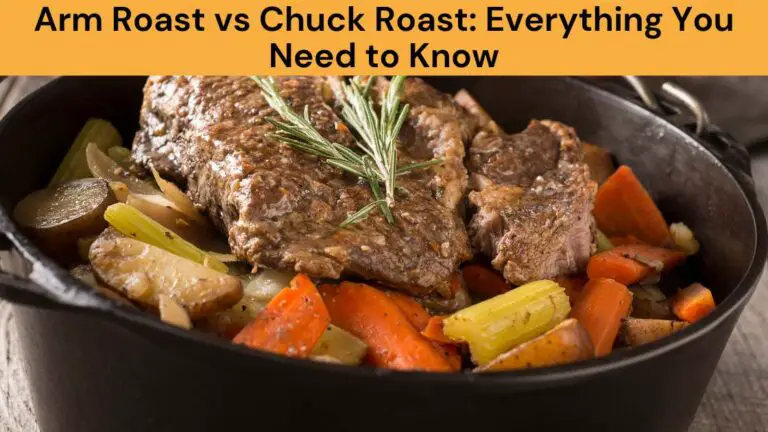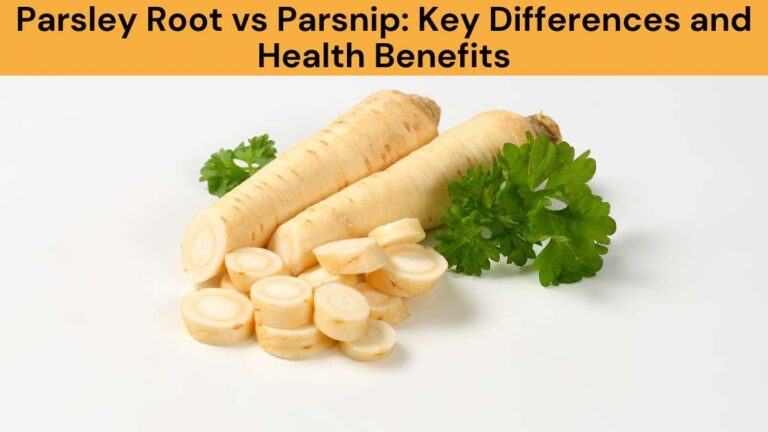The terms ‘dish’ and ‘recipe’ are often used interchangeably in everyday language, but they actually refer to two distinct concepts. This article will explore the definitions of dish and recipe, compare and contrast the two, and discuss the significance of recognizing the difference between them. Examples of both dish and recipe will be provided, as well as tips for preparing each.
Key Takeaways
Knowing the difference between a dish and a recipe is important for anyone who wishes to prepare and serve meals. There are following differences between a dish and a recipe:
- A dish is a prepared food item that is ready to be served, while a recipe is an instruction for creating a specific dish.
- A dish is the end result of a recipe.
- The significance of a dish is that it is essential for serving food, while the significance of a recipe is that it is essential for preparing food.
- Examples of dishes are lasagna and apple pie, while recipes include detailed instructions on how to make these dishes.
- Tips for preparing dishes include having the right cookware and appliances. Tips for preparing recipes include following the instructions for the recipe and using the correct ingredients.
Definition of Dish and Recipe
A dish is a prepared food item that can be served to others, while a recipe is a set of instructions for how to make a dish. Generally speaking, a dish is the result of following a recipe. For example, a cake is a dish, while the instructions for baking the cake are the recipe. A dish can be either a single item, such as a piece of cake, or a combination of multiple items, such as a fruit salad.
A recipe typically includes a list of ingredients, in addition to instructions on how to prepare them. For example, a cake recipe might list flour, sugar, butter, eggs, and baking powder as ingredients, and then provide step-by-step instructions for how to mix the ingredients together and bake the cake in the oven. Recipes can range from simple instructions for making basic dishes, to complex instructions for creating gourmet meals.
The main difference between a dish and a recipe is that a dish is a physical item that can be seen, smelled, and tasted, while a recipe is an instruction set that describes how to make a dish. The recipe is not an actual physical item, but rather a framework for creating a dish. Without a recipe, a dish would not exist.
In addition, dishes may vary depending on the recipe used. For example, the same type of cake can have different flavors depending on the ingredients and instructions used in the recipe. Similarly, the same ingredients may be used to make different dishes depending on the instructions. For example, the same ingredients can be used to make a cake or a muffin, depending on the recipe used.
Comparison of Dish and Recipe
Comparing the two concepts, a dish is the physical result of a recipe. A dish is a prepared food item composed of several ingredients that are mixed, combined, or cooked together and typically served as a meal. It is the finished product, something tangible that can be eaten or enjoyed. A recipe, on the other hand, is an instruction for preparing a dish that includes a list of ingredients and the steps for combining them. It is intangible and cannot be eaten.
A dish is the result of a recipe, but the two are not interchangeable. A recipe is a guide to create a dish, but is not the dish itself. It is not necessary to have a recipe to make a dish. A cook may prepare a dish without using a recipe, simply by using their knowledge and experience. A recipe, however, is essential to replicate the same dish and get the same end result.
The purpose of a dish and a recipe is also different. The purpose of a dish is to provide sustenance and enjoyment, while the purpose of a recipe is to show how to make the dish. Recipes can be used to teach others how to make a dish. A dish may be passed down through generations, while a recipe is often shared with family and friends.
Significance of Dish and Recipe
The significance of a dish and a recipe cannot be understated. For cultures around the world, the meanings behind dishes and recipes stretch beyond their ingredients. For many, these are integral parts of a lifestyle, passed down through generations and deeply intertwined with their history. Here are some of the most important reasons that dishes and recipes are so significant:
- History: Dishes and recipes are often a way for people to connect with their past and honor their ancestors. Recipes are often passed down through generations, and the stories behind them can remind families of their roots.
- Identity: Food is a major part of many cultures, and dishes and recipes can be an expression of people’s values and beliefs. Whether it’s a traditional dish or a recipe that is unique to a certain family, it can be a source of comfort and pride.
- Community: Recipes and dishes can bring people together and form a sense of community. Whether it’s a shared meal or a family recipe, it can create a sense of unity and togetherness.
In short, dishes and recipes are more than just food. They can be a symbol of a culture’s identity, a connection to their history, and a way to bring people together.
Examples of Dish and Recipe
Examples of dishes and recipes vary widely across cultures. A dish, which is an item of food that has been prepared in a certain manner, may be simple or complex. On the other hand, a recipe is a set of instructions on how to prepare a certain dish.
| Dishes | Recipes |
|---|---|
| Spaghetti and meatballs | Boil spaghetti, fry ground beef, combine with Italian herbs and spices, form into meatballs, cook in tomato sauce |
| Pad Thai | Fry garlic, stir in tamarind concentrate, add noodles and fish sauce, top with crushed peanuts and bean sprouts |
| Shepherd’s Pie | Fry onions and ground beef, add vegetables, top with mashed potatoes, bake in oven |
Dishes can be served as part of a meal or on their own, while recipes often contain several components and require a greater level of skill to prepare. Dishes may be prepared from traditional recipes or may be a new combination of ingredients. Recipes may be handed down through generations or may be created by a chef or home cook.
Dishes are typically made with fresh ingredients, while recipes often call for a combination of fresh and processed ingredients. Dishes can be cooked quickly or slowly, while recipes can take anywhere from a few minutes to several hours to prepare. Dishes and recipes can be cooked at home or in a restaurant.
Tips for Preparing Dish and Recipe
Preparing dishes and recipes requires a variety of techniques and ingredients depending on the dish and recipe. Here are 3 tips to consider when preparing dishes and recipes:
- Follow recipe instructions carefully. When preparing a recipe, make sure to read through the instructions thoroughly to ensure that all the ingredients and steps are followed.
- Use fresh ingredients. When possible, always try to use fresh ingredients to guarantee the best flavor and texture.
- Get creative. Don’t be afraid to experiment and make changes to enhance the flavor of the dish or recipe. It can be as simple as adding an extra pinch of seasoning or substituting one ingredient for another.
Having the right tools is also essential when prepping dishes and recipes. Investing in a good set of knives, measuring cups, spoons, and other kitchen gadgets will make cooking a breeze. It is also important to have the right type of cookware that will evenly distribute heat. A good non-stick skillet or pot can make all the difference.
The final step is to have fun and enjoy the process. Cooking can be a great way to spend time with family or friends. Get everyone involved in the cooking process and make it a memorable experience.
Frequently Asked Questions
What Is the Difference Between a Dish and a Meal?
A dish and a meal are both composed of food items, however there are important distinctions between the two. A dish can refer to a single item which is cooked and served, such as a plate of steak or a bowl of soup. A meal, on the other hand, is composed of multiple dishes. A meal typically includes a main dish, side dishes and a beverage. A meal is usually composed to provide a balanced combination of flavors, textures and nutrients. It is often enjoyed in a shared setting, such as a family meal or a dinner party. Ultimately, the distinction between a dish and a meal is based on the number and variety of items served, with a meal typically consisting of multiple dishes.
What Are Some Health Benefits of Eating a Dish Instead of a Recipe?
Eating a dish instead of a recipe may offer health benefits as it can help to reduce the amount of processed ingredients in the diet. Dishes generally consist of fresh ingredients that have been cooked together, while recipes can sometimes include pre-packaged ingredients. Additionally, recipes can include a larger variety of ingredients than a dish and may use ingredients that are less nutrient-dense than those used in a dish. Eating a dish instead of a recipe can help to ensure that the meal is comprised of mostly fresh, nutrient-rich ingredients. This can help to provide the body with the necessary vitamins and minerals to function optimally and can help to reduce the risk of nutritional deficiencies.
How Can I Make a Dish More Flavorful?
The flavor of a dish can be enhanced by a variety of methods. One could season with herbs and spices, use sauces or marinades, or even mix in additional ingredients to give the dish a more complex flavor. Additionally, incorporating different cooking techniques, such as roasting, grilling, and braising, can help bring out the natural flavors of the ingredients. For an extra boost of flavor, fresh fruits and vegetables can be added to the dish for a burst of sweetness. By experimenting with different ingredients, techniques, and seasonings, one can create a flavorful dish that is sure to be a hit.
What Is the Best Way to Store a Dish After It Has Been Cooked?
The best way to store a cooked dish depends on the type of dish and the length of time it needs to be stored. Generally, cooked dishes should be cooled to room temperature, then stored in airtight containers. For dishes that contain dairy or meat, it is important to store them in the refrigerator to reduce the risk of bacteria growth. For dishes that need to be stored for a longer period of time, freezing is the best option. When freezing, be sure to store the dish in a freezer-safe container and use within a few months for optimum freshness.
Is It Better to Use Fresh Ingredients for a Dish or Can I Use Canned/Frozen Ingredients?
When preparing a dish, it is generally better to use fresh ingredients. Fresh ingredients are more likely to retain their natural flavor and nutrients, which can make the dish more flavorful and healthier. Canned and frozen ingredients can still be used, but they may not have as much flavor or nutrition due to the processing and storage methods. Additionally, canned or frozen ingredients may not be as fresh as fresh ingredients, and may contain preservatives or other additives. Ultimately, when deciding between fresh ingredients and canned/frozen ingredients, it is important to consider the nutritional value, flavor, and freshness of the ingredients.
Conclusion
In conclusion, a dish is a prepared food item that is ready to be served, while a recipe is an instruction for creating a specific dish. The difference between them is that a dish is the end result of a recipe. The significance of a dish and recipe is that they are essential for preparing and serving food. Examples of dishes are lasagna and apple pie, while recipes include detailed instructions on how to make these dishes. Knowing the difference between a dish and a recipe is important for anyone who wishes to prepare and serve meals. Furthermore, tips for preparing dishes and recipes include following the instructions for the recipe, using the correct ingredients, and having the right cookware and appliances.




